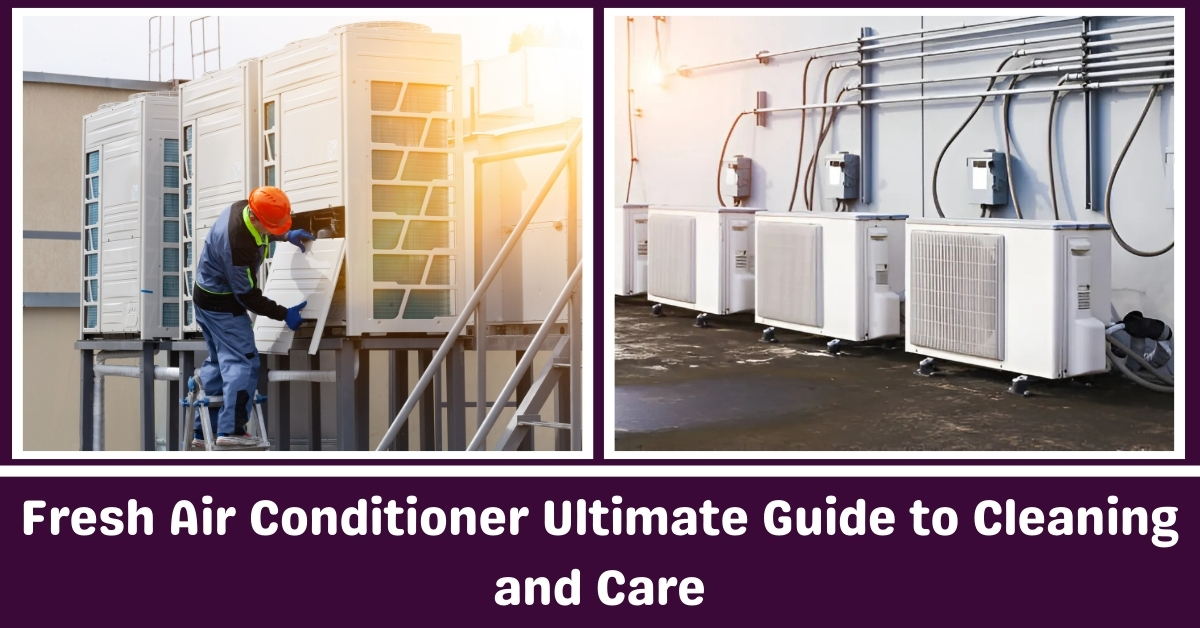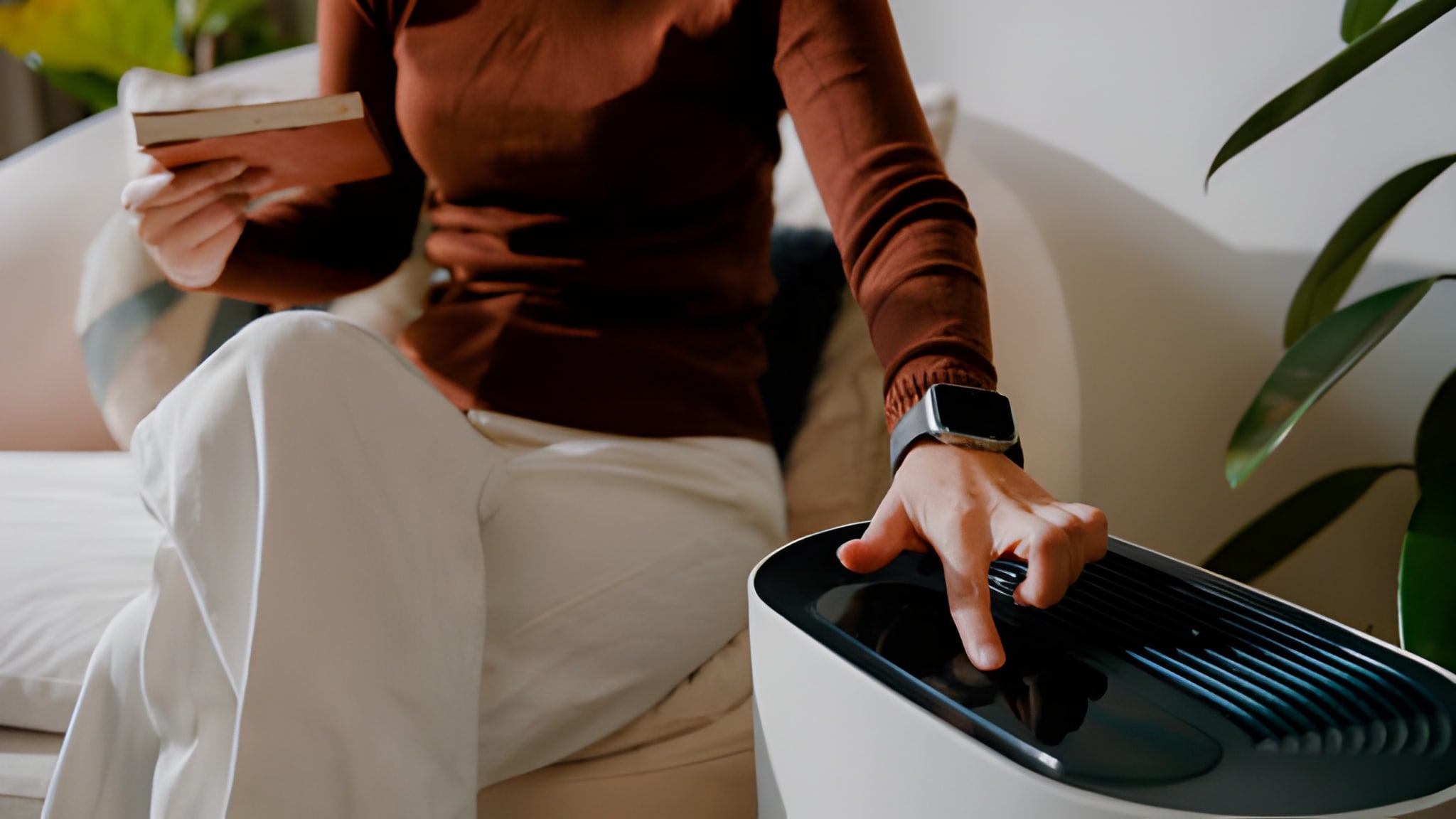An Fresh air conditioner is more than just a cooling device it plays a crucial role in maintaining indoor air quality and energy efficiency.
However, many homeowners and businesses overlook routine maintenance, leading to reduced performance, higher electricity bills, and potential health risks.
Studies show that a well-maintained AC unit can improve efficiency by 15-25%, significantly lowering energy consumption.
Neglecting regular cleaning can cause dust and mold buildup, restricting airflow and forcing the system to work harder.
This not only leads to poor cooling performance but also increases wear and tear on critical components, shortening the unit’s lifespan.
Issues like clogged filters, dirty evaporator coils, and blocked drain lines are common culprits behind rising maintenance costs and unexpected breakdowns.
The good news is that maintaining your AC doesn’t require advanced technical skills—simple routine checks and cleanings can keep it running efficiently.
Whether you own a split AC, window unit, or central system, regular upkeep ensures Fresh air conditioner cleaner air, lower energy costs, and a longer-lasting unit.
Fresh Air Conditioner Ultimate Guide to Cleaning and Care
In this guide, we will provide a step-by-step approach to Fresh air conditioner cleaning and care, covering essential maintenance tasks, troubleshooting common problems, and practical tips to maximize efficiency.

1. Why Cleaning Your Air Conditioner Matters
Keeping your Fresh air conditioner clean is essential for maintaining its efficiency, performance, and longevity. A dirty air conditioner consumes more electricity because dust and debris restrict airflow, forcing the system to work harder.
This increased strain can lead to higher energy bills, frequent breakdowns, and a reduced lifespan for the unit.
Additionally, dust, mold, and bacteria buildup inside the AC can negatively impact indoor air quality, leading to respiratory issues, allergies, and unpleasant odors.
When air filters, coils, and drain lines become clogged, the system struggles to cool effectively, resulting in uneven temperatures and longer cooling cycles.
Cleaning your air conditioner regularly ensures smooth operation, improves cooling efficiency, and prevents costly repairs.
By maintaining a clean AC, you not only save money on energy bills but also create a healthier indoor environment for your home or office.
2. How Often Should You Clean Your Air Conditioner?
The frequency of cleaning depends on various factors, including usage, environmental conditions, and the type of air conditioner. If you use your AC daily, especially in dusty or humid areas, more frequent maintenance is necessary.
The air filter should be cleaned every two weeks to maintain airflow and prevent dust accumulation. The evaporator and condenser coils require cleaning every three to six months to ensure efficient heat exchange.
The condensate drain line should be flushed every three months to prevent clogs and mold growth. The outdoor unit, which is exposed to dust, dirt, and leaves, should be cleaned every six months.
If you have pets or live in an area with high pollution levels, you may need to clean the AC more often. Regular maintenance prevents major issues and keeps your unit running efficiently year-round.
3. Step-by-Step Guide to Cleaning Your Air Conditioner
Regular cleaning of your air conditioner ensures efficient performance, prevents breakdowns, and extends its lifespan.
Follow this step-by-step guide to keep your AC running smoothly and maintain optimal cooling efficiency.
Cleaning the Air Filter
The air filter is one of the most important components to maintain, as it traps dust, allergens, and debris. A clogged filter restricts airflow, causing the AC to work harder and consume more energy.
To clean the filter, first, turn off the unit and remove the front panel. Take out the filter and inspect it for dust buildup. Rinse it under running water and use a mild detergent if necessary.
Let it dry completely before reinserting it. If your AC uses disposable filters, replace them every three to six months.
Keeping the filter clean improves cooling efficiency and ensures better indoor air quality.
Cleaning the Evaporator Coils
Evaporator coils absorb heat from the air, but when covered in dust, they lose efficiency and can cause the system to overwork. To clean the coils, turn off the Fresh air conditioner and access the coils by removing the front panel.
Use a soft brush to remove loose dust and dirt. Apply a coil cleaner spray and let it sit for a few minutes before wiping it off with a clean cloth.
This process helps the coils function effectively, improving the overall cooling performance of the unit.
Clearing the Condensate Drain Line
The condensate drain line removes excess moisture from the AC. If it gets clogged, water can leak inside the unit, causing mold growth and water damage.
To clean the drain line, locate the drain pipe and use a wet/dry vacuum to remove any blockages. You can also pour a mixture of vinegar and warm water into the pipe to clear debris and kill bacteria.
Let it sit for 30 minutes before flushing it with clean water. Regular maintenance of the drain line prevents water leaks and ensures the smooth operation of the AC.
Cleaning the Outdoor Condenser Unit
The outdoor condenser unit releases heat from the system, but dust, leaves, and debris can obstruct airflow and reduce efficiency. To clean it, first, turn off the power supply.
Remove any leaves or dirt from around the unit. Use a hose with low pressure to wash away dirt from the coils and fins. Be careful not to bend the fins, as they are delicate and essential for heat dissipation.
If the fins are bent, use a fin comb to straighten them. Wipe down the exterior of the unit with a damp cloth.
Keeping the condenser clean allows the AC to cool effectively and prevents overheating.
Checking the Refrigerant Levels
Low refrigerant levels can cause the Fresh air conditioner to blow warm air or freeze up. If your unit is not cooling properly, check for ice buildup on the coils or listen for hissing sounds near the refrigerant lines.
If you suspect a refrigerant leak, contact a licensed HVAC technician to inspect and refill it. Low refrigerant levels reduce cooling efficiency and can lead to compressor failure if left unaddressed.
Regular maintenance helps detect issues early and prevents costly repairs.
Inspecting the Thermostat
The thermostat controls the temperature and overall operation of the AC. If it is not functioning properly, the system may run inefficiently or fail to maintain the desired temperature.
Check the settings and compare them with an indoor thermometer to ensure accuracy. If you have a manual thermostat, consider upgrading to a programmable or smart thermostat to optimize energy usage.
If the thermostat runs on batteries, replace them periodically. A well-calibrated thermostat improves cooling efficiency and prevents unnecessary energy consumption.
4. Common AC Problems & Troubleshooting
Air conditioners can develop common issues over time, affecting cooling performance and efficiency. Identifying and troubleshooting these problems early can prevent costly repairs and ensure smooth operation.
AC Not Cooling Enough
If the AC is running but not cooling effectively, the most common causes include a dirty air filter, clogged evaporator coils, or low refrigerant levels. Check the filter first and clean or replace it if necessary.
If the evaporator coils are dirty, clean them following the steps mentioned earlier. If the issue persists, low refrigerant could be the cause, and a professional inspection is required.
Proper airflow and refrigerant levels are essential for efficient cooling.
Water Leaking from AC
Water leakage is often due to a clogged condensate drain line or frozen evaporator coils. If you notice water pooling near the indoor unit, check the drain line for blockages and clear them as needed.
If ice is forming on the coils, turn off the AC and let it thaw before checking the airflow and refrigerant levels.
Addressing these issues promptly prevents water damage and mold growth.
AC Making Loud Noises
Unusual noises such as rattling, buzzing, or grinding could indicate loose fan blades, debris in the condenser, or worn-out motor bearings. If you hear rattling, check for loose components and tighten them.
If the noise comes from the outdoor unit, clear any debris obstructing the fan. If grinding noises persist, professional servicing may be needed to inspect and replace damaged parts.
Regular maintenance helps identify potential issues before they worsen.
AC Short Cycling
Short cycling occurs when the AC turns on and off frequently without completing a full cooling cycle. This can be caused by a dirty air filter, an oversized unit, or a faulty thermostat.
Cleaning the filter and checking the thermostat settings can help resolve the issue. If short cycling continues, consult a professional to assess the system’s capacity and efficiency.
Ensuring proper operation prevents excessive wear and tear on the compressor.
5. Pro Tips for Keeping Your AC in Top Shape
- Ceiling fans help circulate cool air, reducing the workload on the Fresh air conditioner and improving overall efficiency.
- Blocking direct sunlight helps maintain indoor temperatures and reduces the need for excessive cooling.
- Seal gaps around windows and doors to prevent cool air from escaping, reducing energy waste.
- Annual servicing by an HVAC technician helps detect issues early and ensures optimal performance.
- If your AC is outdated, consider upgrading to a unit with a higher SEER rating to save on energy costs.
- Keeping the thermostat at a moderate temperature reduces strain on the system and lowers energy consumption.
- Running multiple heat-generating appliances while the AC is on can reduce its efficiency.
- Ensure air vents are not blocked by furniture or curtains to allow proper airflow throughout the room.
By following these maintenance steps and troubleshooting tips, you can keep your air conditioner in excellent condition, ensuring efficient cooling, lower energy bills, and a longer lifespan for the unit.
Regular cleaning and proper care prevent major breakdowns, allowing you to enjoy uninterrupted comfort throughout the year.
Conclusion
Regular cleaning and maintenance of your air conditioner are essential for ensuring optimal performance, energy efficiency, and long-term durability.
A well-maintained Fresh air conditioner not only cools your space effectively but also reduces electricity costs and minimizes the risk of costly repairs.
Neglecting basic upkeep can lead to clogged filters, dirty coils, and blocked drain lines, which strain the system, reduce airflow, and increase wear and tear on key components.
Over time, this can result in poor cooling performance, higher energy bills, and even system failure.
By following a structured cleaning routine including filter maintenance, coil cleaning, drain line flushing, and outdoor unit care you can keep your AC running smoothly.
Additionally, staying alert to common AC problems like poor cooling, water leaks, or unusual noises allows you to troubleshoot early and prevent major breakdowns.
Consistent care not only extends the lifespan of your air conditioner but also improves indoor air quality, creating a healthier and more comfortable environment.
Implementing these maintenance steps will help you get the most out of your AC while keeping operating costs low. A little effort now can save you significant time and money in the future.





